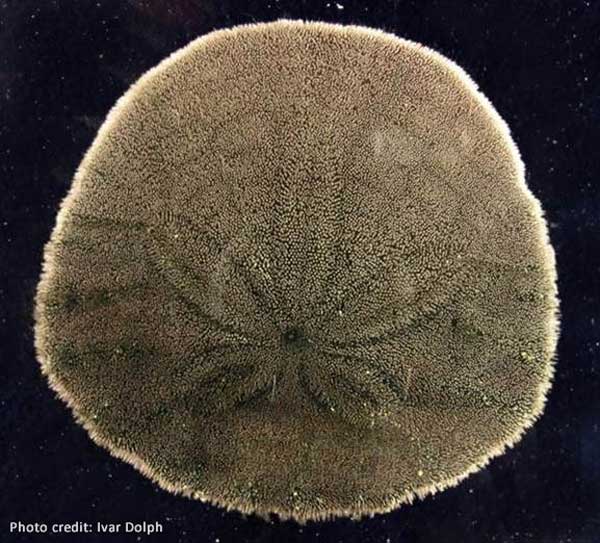This close relative of sea urchins lives on sandy bottoms below the lowest tide. Sand Dollars are round like urchins but flat. Tiny gray or reddish purple spines cover them giving a velvety appearance. Dead Sand Dollars washed up on the beach are white because they've lost these spines.
The spines are very important to the Sand Dollar. As it lies on the bottom, bits of edible plants and animals fall onto the creature. The spines can move, and they relay food to the Sand Dollar's edge. Then other spines and tube feet on the bottom send the food along grooves to the animalís central mouth. Before the food is digested a special jaw chews it up, sometimes for 15 minutes.
Sand Dollars can move. With a wave-like motion of its spines, this flat animal slowly flows across the sand. Or it can burrow just beneath to escape enemies such as sea stars, crabs, and fish.
In rough or very calm water the Sand Dollar stays flat on the bottom and partly buried in the sand. But when there's moderate current, Sand Dollars stand on edge leaning with the flow. Then they can snag tiny animals and bits of seaweed floating past, holding them with tiny pincers and those handy spines.
Trawler nets and anchors dragged across the sand destroy Sand Dollars and other creatures at home on the sandy seafloor. Follow low impact practices when boating. And learn how your seafood has been caught. You can make a difference!

